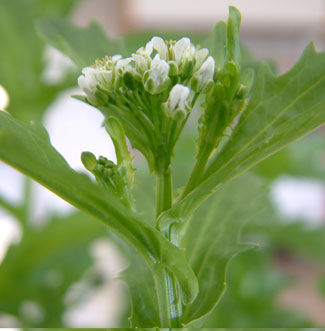Bioremediation: getting to know the soil cleaners

Elemental uptake and arbuscular mycorrhizal (AM) colonization were studied during the cycle of field collected Cd/Zn hyperaccumulating Thlaspi praecox (Brassicaceae). Plant biomass and tissue concentrations of Cd, Pb, Zn, Fe, and Ni were found to vary during the development, while no variation in P, K, Ca, Mn and Cu tissue concentrations were observed. Lowest Cd bioaccumulation to rosette leaves observed during seedling were partially attributed to lower concentrations from roots to the rosette leaves and partially to high translocation to the stalks, indicating the high Cd mobility to the reproductive tissues which is in line with our previous studies. Highest intensity of AM colonization (M%) was observed in the flowering phase and was accompanied by increase root Cd, Zn, Pb and Fe contents. In addition, a positive correlation between AM colonization and Fe contents in the rosette leaves was found.
The results indicate developmental dependence of AM formation accompanied by selective changes in nutrient acquisition in Thlaspi praecox that is related to increased plant needs and the protective role of AM colonization on metal polluted sites during the reproductive period.
Development stages and fungi colonization level.
References
"Changes in elemental uptake and arbuscular mycorrhizal colonisation during the life cycle of Thlaspi praecox Wulfen" Chemosphere 69 (2007) 1602-1609. P.Pongrac, K.Vogel-Mikuš, P. Kump, M. Nečemer, R. Tolrà, Ch. Poschenrieder, J. Barceló, M. Regvar


